In this lesson we’re going to look at octaves, which are one of my favourite tools for lead guitar. To do this we’ll examine four incredibly useful fingerings for octaves. Once we’ve done that, then I’ll give you an example lick that makes use of octaves.
But before we get started with the fun stuff, it’s probably a really good idea if I explain exactly what octaves are…
Understanding Octaves
In music, the term interval is used to describe the distance in pitch between two notes. Octaves are a type of interval that encompass eight letters from the musical alphabet. Let’s take a look an example of an octave interval that lies within the D Natural Minor scale…
D Natural Minor Scale:

If you look at the diagram above, you can see that the distance between both the D notes is an octave. The technical name for the interval shown above is a perfect octave, but most rock guitarists will just refer to it as an octave.
Another couple of useful things to remember about perfect octaves are these titbits…
- The letter name of both the notes will always be identical.
- The distance in pitch is always going to be 12 semitones.
The Octave Fingerings
Now that we’ve quickly talked a little bit about what octaves are, let’s now look at four extremely convenient ways of playing them on the guitar…
Octave Fingering 1: E-string and D-string
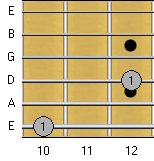
Octave Fingering 2: A-string and G-string
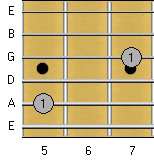
Octave Fingering 3: D-string and B-string
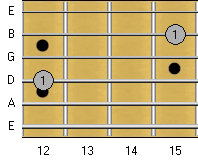
Octave Fingering 4: G-string and E-string
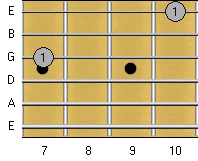
I’ve shown all the octave fingerings using the note D. But because they don’t use open-strings, all of them can be used to play any note.
Although the fingerings are pretty easy to memorize, I thought it might be helpful to include an exercise that I used to practice many moons ago…
Octave Memorization Exercise 1: Practice For Five Minutes

Here’s how to do the exercise…
- Choose a note that you’d like to work on. For this example we’re going to use the note D.
- Play through all the octave fingerings using the note you chose for the first step. The TAB below shows exactly how I would do this for the note D.
- Repeat the second step until you have done five minutes practice.
Although this exercise is pretty straightforward, here are a few practice tips to help you get the most out of it…
- Use the underside of the index finger of your fretting-hand to mute the string that’s in between the two notes of the octave.
- Practice the exercise very slowly. The goal of the exercise is to memorize all four octave fingerings, not to play them quickly.
- Each time you practice the exercise, make sure that you choose a different note.
- Aim to practice the exercise at least three times a week. Continue doing this until you have totally mastered all four fingerings.
An Example Lick
The cool thing about octaves is that you can play them in two ways…
- Harmonically: This is when you play both notes of the octave at the same time.
- Melodically: This is when you play the notes of the octave separately, one at a time.
Because the exercise focuses on playing octaves harmonically, let’s now check out a guitar lick that uses them in a melodic fashion…
Example Lick: D Natural Minor Scale
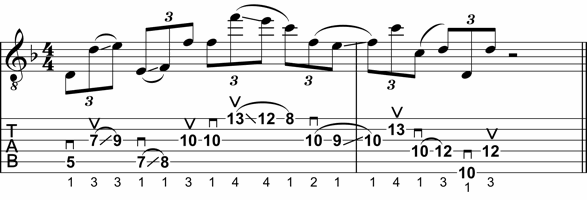
You don’t need to learn this lick if you don’t want to, but I think it would be a very good learning exercise to analyse it to see how I’ve used octaves in it. Doing this analysis will hopefully gives you lots of ideas of how you might use octaves in your own playing.
A Few Last Words
Hope you enjoyed this introductory lesson on octaves. Once you’ve memorized the four octave fingerings, be sure to experiment and create some of your own musical ideas that use them.
Practice hard!
Return To: Guitar Fretboard Knowledge Lessons